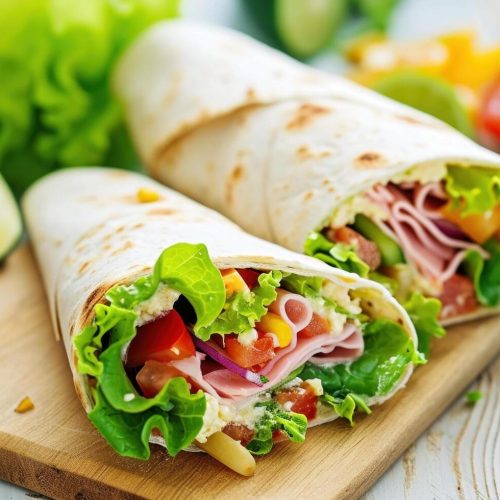Losing fat while gaining muscle is often seen as the ultimate fitness goal. Achieving this balance can transform your physique, improve your overall health, and boost your confidence. However, it requires a strategic approach that combines the right diet, exercise regimen, and lifestyle habits. This guide will walk you through the essential steps to simultaneously lose fat and build muscle, offering practical advice to help you achieve your fitness goals.
Understanding the Basics
To successfully lose fat and gain muscle, it’s important to understand the underlying principles:
- Caloric Balance: To lose fat, you need to be in a caloric deficit, meaning you consume fewer calories than your body burns. However, to gain muscle, your body requires enough calories and nutrients to support muscle growth. The challenge is to strike a balance where you’re eating enough to fuel muscle gain while still being in a slight caloric deficit to lose fat.
- Macronutrient Balance: The right balance of protein, carbohydrates, and fats is crucial for losing fat and building muscle. Protein is especially important for muscle repair and growth, while carbohydrates provide energy for your workouts, and healthy fats support overall health and hormone production.
- Exercise Selection: The types of exercises you choose play a significant role in achieving this dual goal. Strength training is essential for building muscle, while cardio helps create the caloric deficit needed for fat loss. Combining both in the right proportions is key to success.
- Consistency and Patience: Changing your body composition takes time. It’s important to be consistent with your diet and exercise routine while being patient with the process. Quick fixes rarely lead to lasting results, so focus on sustainable habits.
Designing a Diet for Fat Loss and Muscle Gain
Your diet is the foundation of your fat loss and muscle-building journey. Here’s how to structure your nutrition plan:
- Prioritize Protein: Protein is the most important macronutrient when it comes to building muscle. It provides the amino acids needed for muscle repair and growth. Aim to consume 1.6 to 2.2 grams of protein per kilogram of body weight daily. High-quality protein sources include lean meats, fish, eggs, dairy, legumes, and plant-based proteins like tofu and tempeh.
- Moderate Carbohydrates: Carbohydrates are your body’s primary energy source, particularly during intense workouts. However, it’s important to manage your carbohydrate intake to avoid excess calories. Focus on complex carbohydrates like whole grains, fruits, vegetables, and legumes, which provide sustained energy and are less likely to be stored as fat.
- Healthy Fats: Don’t shy away from fats. Healthy fats are essential for hormone production, including testosterone, which plays a key role in muscle building. Include sources of healthy fats like avocados, nuts, seeds, and olive oil in your diet. Aim for fats to make up about 20-30% of your daily caloric intake.
- Caloric Deficit with Adequate Nutrition: To lose fat while gaining muscle, you need to be in a slight caloric deficit—about 250-500 calories below your maintenance level. This allows your body to burn fat for energy while still providing enough nutrients to build muscle. Use an online calculator to estimate your daily caloric needs based on your activity level and goals.
- Meal Timing and Frequency: While total daily intake is the most important factor, meal timing can also play a role in optimizing fat loss and muscle gain. Eating protein-rich meals throughout the day helps maintain muscle protein synthesis. Consider having a protein-rich meal or snack within 30 minutes to two hours after your workout to support muscle recovery and growth.
- Stay Hydrated: Hydration is essential for both fat loss and muscle gain. Water supports metabolism, aids in digestion, and helps maintain muscle function. Aim to drink at least 8-10 glasses of water a day, and more if you’re engaging in intense workouts.
Exercise Strategies for Losing Fat and Gaining Muscle
Your workout routine should be designed to maximize both fat loss and muscle gain. Here’s how to structure your exercise regimen:
- Strength Training: Strength training is the cornerstone of building muscle. Focus on compound exercises that work multiple muscle groups simultaneously, such as squats, deadlifts, bench presses, and rows. These exercises allow you to lift heavier weights, which is key to muscle growth. Aim for 3-5 sets of 6-12 repetitions per exercise, with enough weight to challenge your muscles by the last few reps.
- Incorporate Progressive Overload: Progressive overload involves gradually increasing the weight, repetitions, or volume of your workouts over time. This continuous challenge forces your muscles to adapt and grow stronger. Track your progress and aim to lift slightly heavier weights or perform more repetitions each week.
- Cardio for Fat Loss: While strength training builds muscle, cardio is essential for creating the caloric deficit needed for fat loss. Incorporate a mix of steady-state cardio (like jogging or cycling) and high-intensity interval training (HIIT) into your routine. HIIT is particularly effective for burning fat while preserving muscle because it alternates short bursts of intense exercise with rest periods.
- Rest and Recovery: Muscles grow during rest, not during workouts. Ensure you get enough rest between strength training sessions to allow your muscles to repair and grow. Aim for at least 48 hours of rest for each muscle group before working it again. Additionally, prioritize sleep, as it’s crucial for recovery and hormone regulation.
- Active Recovery: On your rest days, consider engaging in active recovery activities like walking, light cycling, or yoga. These activities promote blood flow to the muscles, aiding in recovery without adding significant stress.
- Mind-Muscle Connection: Focus on the quality of your movements during workouts. The mind-muscle connection involves concentrating on the muscle you’re working, which can enhance muscle activation and growth. This technique can be particularly effective during isolation exercises, such as bicep curls or leg extensions.
Lifestyle Factors for Success
In addition to diet and exercise, certain lifestyle factors can influence your ability to lose fat and gain muscle:
- Get Enough Sleep: Sleep is critical for muscle recovery and fat loss. Aim for 7-9 hours of quality sleep each night. Lack of sleep can lead to increased hunger and cravings, particularly for high-calorie foods, as well as decreased performance during workouts.
- Manage Stress: Chronic stress can elevate cortisol levels, which may lead to increased fat storage, particularly in the abdominal area, and hinder muscle growth. Practice stress management techniques such as meditation, deep breathing exercises, or spending time in nature to keep stress levels in check.
- Consistency is Key: Building muscle and losing fat takes time, so it’s important to stay consistent with your diet, exercise, and recovery routines. Even when progress seems slow, remember that consistency will lead to long-term results. Avoid falling into the trap of quick fixes or extreme diets, which are often unsustainable.
- Stay Patient and Positive: Transforming your body composition is a gradual process. Celebrate small victories along the way and stay focused on your long-term goals. A positive mindset and patience will keep you motivated and on track, even when progress is not immediately visible.
- Track Your Progress: Regularly monitor your progress to ensure you’re moving towards your goals. Use methods like body measurements, progress photos, and strength assessments to gauge your results. If needed, adjust your diet or workout routine based on your progress.
Conclusion
Losing fat while gaining muscle is achievable with the right approach to diet, exercise, and lifestyle habits. By prioritizing protein intake, creating a slight caloric deficit, engaging in strength training, and incorporating cardio, you can effectively change your body composition. Remember that consistency, patience, and a balanced approach are key to achieving sustainable results. With dedication and effort, you can achieve a leaner, more muscular physique and enjoy the health benefits that come with it.
Tags: Fat Loss, Muscle Gain, Strength Training, Nutrition for Muscle Growth, Progressive Overload, Cardio for Fat Loss, Healthy Lifestyle, Body Composition, Fitness Tips, Building Muscle





